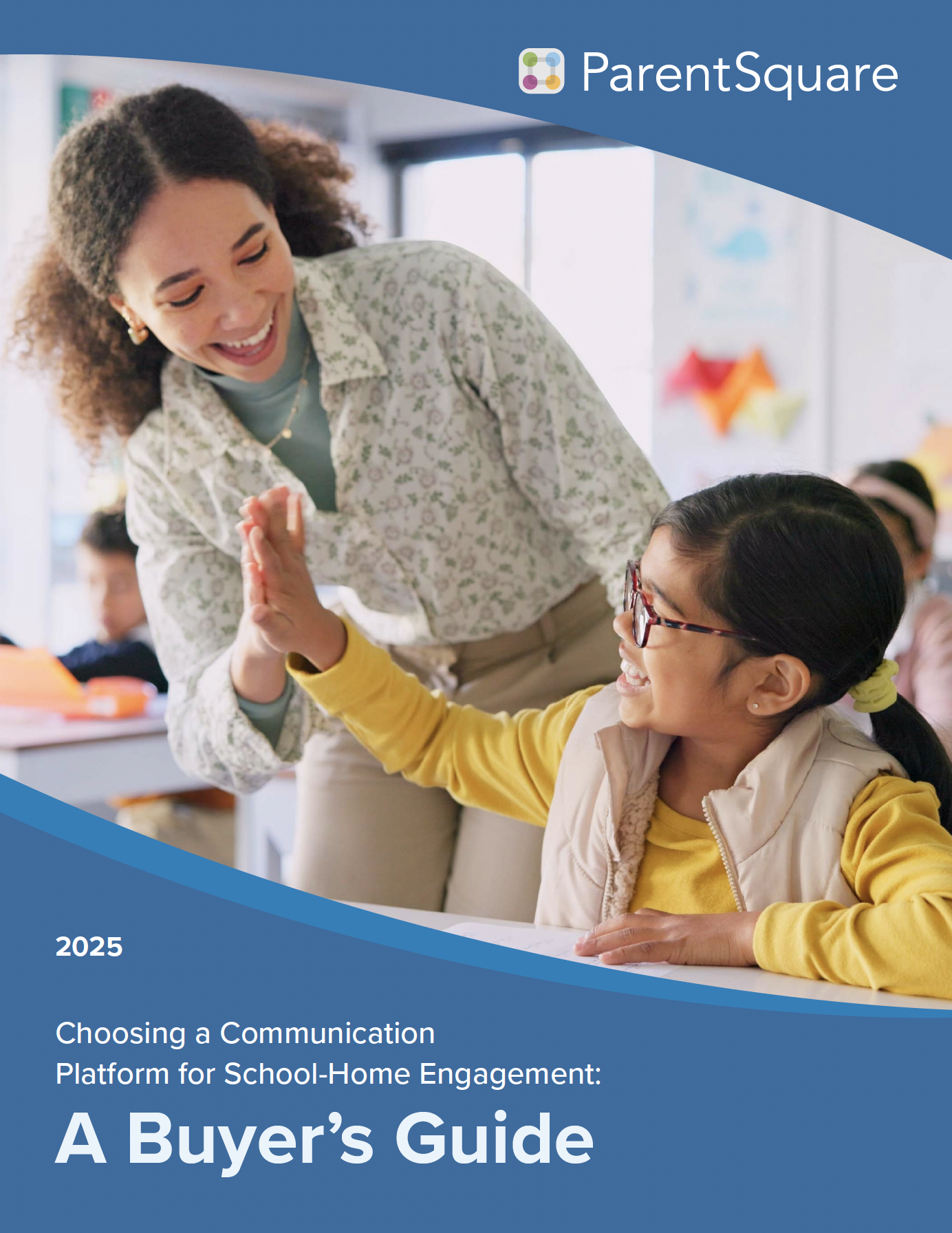Here at ParentSquare, we’re seeing great examples from dozens of K-12 districts and schools supporting families and students to get on track in 2021. As we all head into the second half of the school year, here are the top seven ways we’re seeing school-home communication support student success!
- Taking Inventory: How Are Your Students Really Doing?
- Maintaining Open & Clear Communication
- Ensuring Students & Families Know Where To Find Vital Resources
- Encouraging & Teaching the Importance of Self-Care
- Re-Engaging Your School Community
- Helping Students Set Goals
- Going Easy on Your Students (and Yourself!)

Take time to check-in with your students to see how they’re doing. With so many students and parents experiencing pandemic fatigue, whether they’re remote, hybrid, or on-site, a quick conversation can make all the difference.
Research shows that students perform better and learn more when they form connections with their teachers and classmates. A simple “How are you doing?” or “How are the assignments going for you?” can be a significant step towards building a stronger connection with your students.
Last summer, we posted an article on our ParentSquare Learning Network blog by Denise Wright, M. Ed., STEM Educator for Horry County Schools, titled, Learning from a Distance: Making That Connection With Students and Families, which outlined tips for connecting with students while remote. So many of these tips are still relevant! Here are a few of our favorites (adapted for today’s learning scenarios):
- Personal Phone Calls: If possible, could your teachers take some time each week to make phone calls where they check-in with several students to see how they’re doing, if they are facing any challenges, etc.? Encourage teachers to take notes about their conversations so they’re up-to-date for any subsequent calls.
- 1-1 Virtual Meetings: Could your teachers strive to set up time in the second half of the year to do a 1-1 check-in? Virtual meetings are a great alternative to phone calls because they allow teachers and students to interact similarly to how they would in person.
- Re-Introduce Yourself Assignment: Last summer, we recommended an “introduce yourself” assignment for students and teachers. Since it’s likely most students in a class know each other by now, create an adaptation! Make sure teachers keep it fun, creative, and open to interpretation so that each student can have their unique take on the assignment.
- Provide Video Reminders and Weekly Overviews: At the school level, principals can provide students with fun video reminders with tips, such as assistive technologies to succeed if hybrid or remote; important announcements (make these exciting like Mr. Ralston, principal of Perry Meridian 6th Grade Academy does!); and an overview of what the school week will look like.
- Make Time for Fun & Games: Keep building upon your student relationships and promote SEL through fun games and events. For many students, it’s a much-needed break from the monotony of remote and hybrid learning. Check out our article on activities to build community during remote learning for examples of fun, community-building events that schools can implement!
Encouraging your teachers to take a few extra moments each day to ensure their students are on track as school begins again will help create a positive academic community for the rest of the year.

If there’s one thing that the pandemic has forced all of us to do, it’s communicate better. And good communication is at the core of quality relationships.
As pandemic-related protocol and regulations continue to change, it’s essential to keep the channels of communication open and transparent, so students and their families have a clear understanding of what to expect from district/school leadership. Districts and schools can help ease any uncertainty by addressing students and families early on as they return to school from extended breaks.
We love how Santa Rosa Academy keeps families informed with Coffee with Principals Capp & McDairmant. In this Zoom event, their principals and special guests, such as the Education Director, nurse, and Facilities Manager, have a conversation about current issues and protocol and answer families’ questions. This is a creative idea for addressing parents’ concerns and keeping everyone in the school community informed!
Wabash County Districts shows care towards its students and families by keeping them informed about their plans regarding COVID-19 protocol. Check out this Joint Statement from the Wabash County Superintendents that provides clear and concise information regarding the pandemic. Providing families with a plan allows for one less thing worry about during an already difficult time.
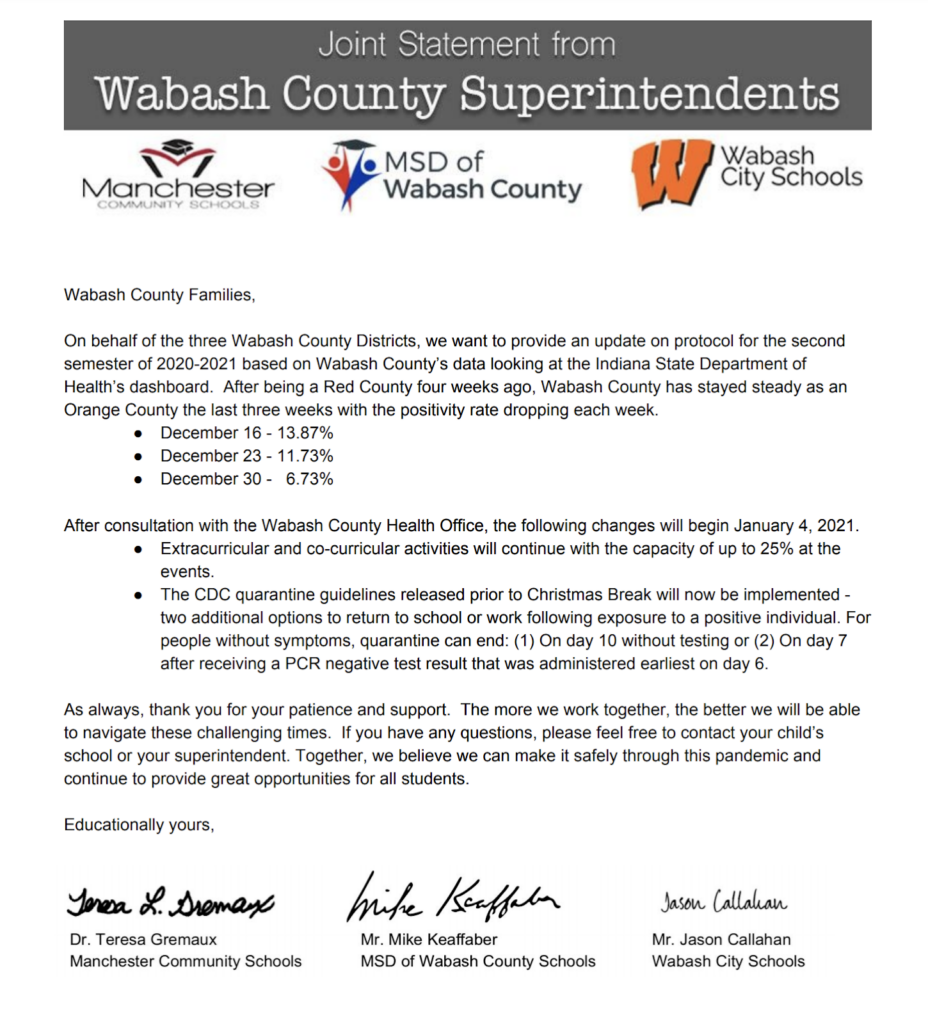

During these times of uncertainty, many students and their families rely on district and school resources, such as free meals. Maintaining clear communication about when and where these resources are available is important, so no family goes without critical necessities.
Take a look at what the Oregon Trail School District sent out to inform students and families about their Meal Pack Breakfast & Lunch. They outlined the free meal details in a clear and easy-to-digest way to ensure everyone can access their meal services.
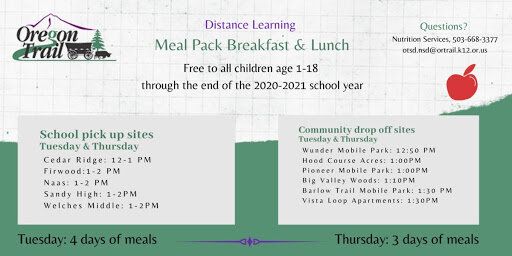

With so many students engaged in remote learning and increased stay-at-home orders, it can be challenging and stressful for students and families. Supporting students’ mental health now is more important than ever.
Last winter, we posted an article on our blog by Laura Steinbrink, an educator and author of #RockNTheBoat!, with tips on helping students and families survive the winter blues and stress. Here, we give some suggestions on assisting students in taking moments to relax and care for themselves.
Another excellent example of a resource that promotes mental health and wellness is Segerstrom High School’s “Virtual Lunch Bunch,” where students who may be struggling with anxiety, depression, or stress, or need someone to talk to, can eat lunch and talk with their school social worker about anything that’s on their mind.
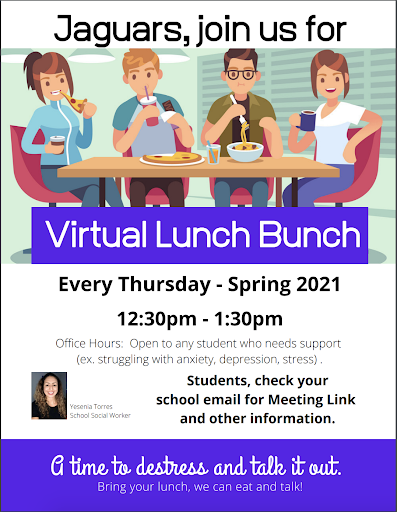
Here’s what Watertown City School District is doing to encourage self-care among its students through virtual 4-H wellness events in partnership with the Cornell Cooperative Extension. Students can learn ways to stay active and make nutritious treats, which are two fun ways to practice self-care daily. Remote events like these are a powerful resource that helps students know they aren’t alone.
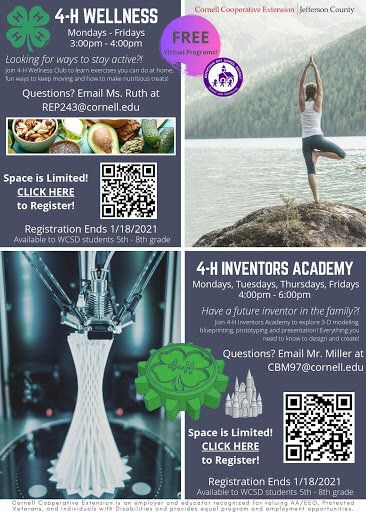
Additionally, Watertown CSD promotes the “Nurture with Nova” newsletter, which outlines self-care tips and tricks for the new year. Written by Nova, a Student Assistance Counselor and Mindfulness Educator at Case Middle School in Watertown, NY, this monthly newsletter is packed with great tips and tricks to help encourage, inspire, and support self-care.
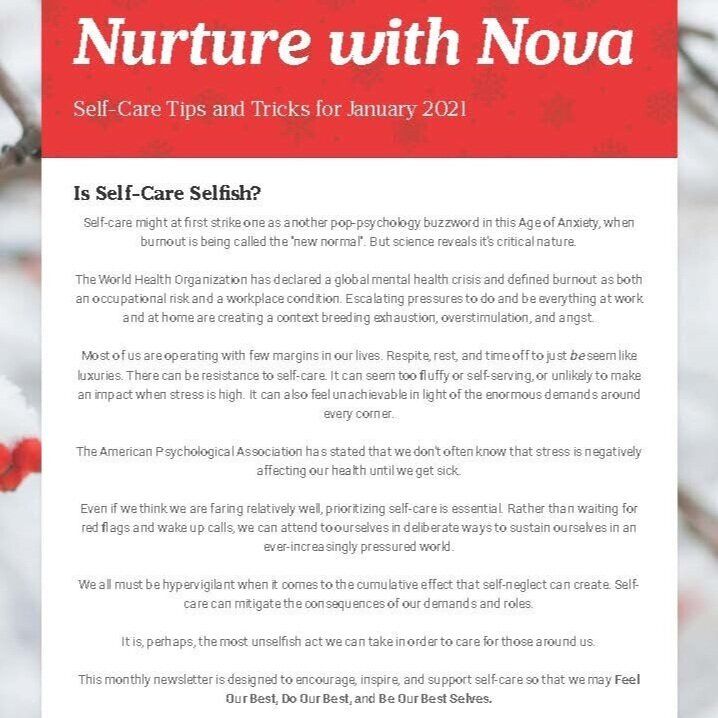

After some time away from school during break, students are excited to be back with their classmates, whether remote or in-person. There are many fun ways to help students re-establish the bonds they’ve made within their school community during the first half of the year.
If you’re remote, plan a Zoom activity to promote community and fun. Cedar Ridge Middle School hosted an “Aloha Week,” where students could participate in activities to receive fun prizes, like a student-designed positive postcard. Aloha Week is a great idea for helping students start 2021 in a positive mindset and feel re-connected to their classmates.

Another idea from Cedar Ridge Middle School is a virtual homework club where students can collaborate on their classmates’ homework, making homework a little more fun and giving students another opportunity to connect and receive additional support.
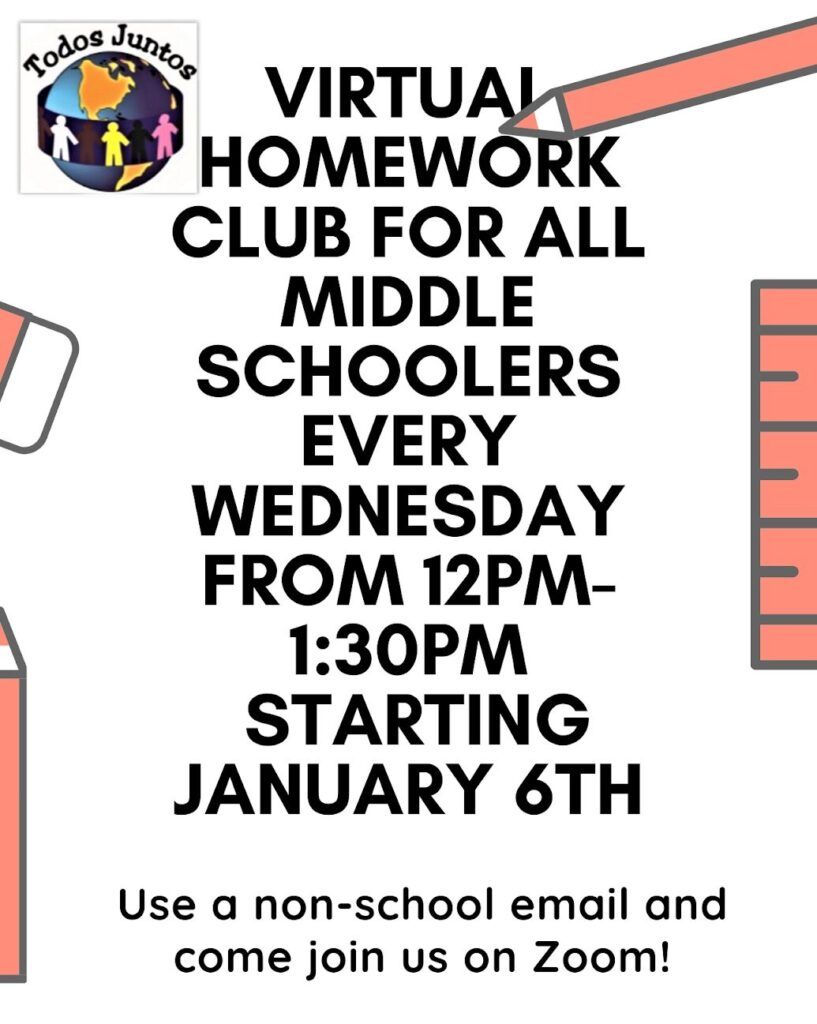

Setting goals is an important part of keeping students engaged and motivated. Could your teachers guide them through an exercise in goal setting to help students set individual and classroom goals for the second half of the school year? Encourage teachers to let students brainstorm alone or in small groups and present their plans to the class.
Clinical psychologist Dr. Gail Matthews researched goal setting, which revealed those who write down their goals and share them with a friend and send weekly progress updates, were on average, 33% more successful when it comes to accomplishing them than those who only formulate goals. This exercise can be a powerful tool in encouraging students to reach their full potential.

There’s no denying it, 2020 was a rollercoaster of a year for students and educators. As we dive into 2021, remember to go easy on students, they too have been completely removed from their routines; in many cases, families are experiencing financial hardships and illness, and everyone has more internal and external stressors. Teach students by example that it’s okay to give yourself a break, to be kind to yourself, and to remember, we’re all human…and in this together.
We hope you find these tips and examples helpful, please let us know what you think! Anything more you would add to the list?

